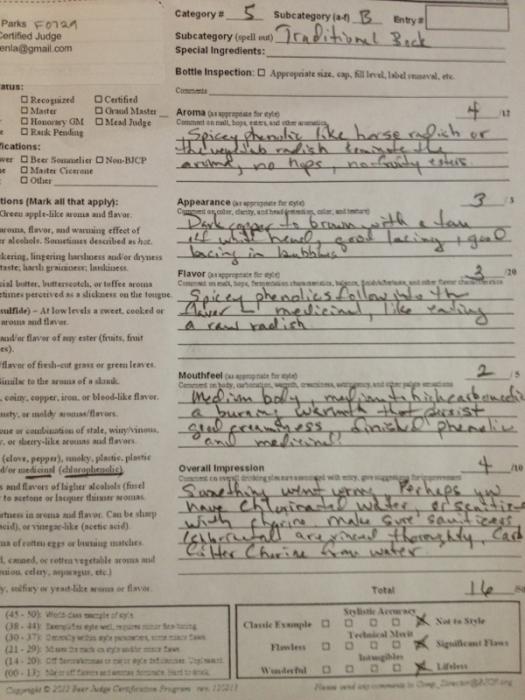You actually have some solid feedback from your two entries. Both sets of judges for both beers noted phenols in the aroma and flavor and astringency. Phenols can be the result of a few different things, but your judges specifically noted spicy and "horse radish-like". Additionally they called levels of acetyladehyde and fruity esters. To me, without the beer in front me, sounds like you are having some issues with fermentation, specifically your fermentation temperatures.
There are lots of ways to react to poor scores in a competition, and believe me I was very guilty of "ugly-baby" syndrome as a new brewer, but the best way is to take a good look at what the judges are telling you about your beer. This is after all why you paid to enter a BJCP competition. Take the criticism constructively and try to address it before your next brew. How are you controlling your temperatures? Are you pitching enough yeast - looking at your recipes you're clearly not.
As for recipes, I have a few observations and questions:
- Bohemian Pilsner / Classic American Pilsner
1) First of all, there is a clear discrepancy here as your recipe says Classic American Pilsner, but the scoresheets say Bohemian Pilsner. I suspect your beer was judged in the wrong sub-category.
2) What yeast did you use? My screen resolution isn't the best, but it looks like a dry yeast. Safale?
3) Did you ferment this with an ale yeast because your fermentation temperatures (67 F in primary for 14 days and 67 F in secondary for 7 days) is unusual. If this was a lager yeast it would greatly explain why you have fermentation flaws in your beer.
4) I see no mention of any lagering period.
5) Your final gravity, 1.004, is very low for a Classic American Pilsner. You should be in the 1.010 - 1.015 range. That's very dry and probably explains a good deal of the astringency comments.
-Bock
1) My screen resolution isn't the best, but is your SG really 1.083? The BJCP SG range for Traditional bock is 1.064 - 1.072.
2) Your FG is way too high for this category. You finished at 1.030 but for this beer you should be in the 1.013 - 1.019 range.
3) One vial of liquid yeast!? You really need to make a starter with liquid yeast especially with a lager. This would explain the under-attenuation.
4) Your fermentation temps seem to be within the normal range for this strain, but again I see no mention of lagering.
My recommendations (take them as you will):
1) You need to start making yeast starters if you're using liquid yeast and especially with a high gravity lager. This is really very important.
2) I'm not sure what strain of yeast you used in your Pilsner, but if it was a lager you definitely fermented too hot.
3) I see no mention of lagering on your recipe sheets. I'm hopeful that you did so, but if not, lagering is a critical step here.
4) Your Pilsner finished very dry and your bock was under-attenuated. I think you have some fermentation problems that could easily be addressed for your next beer.
Everyone has had a poor competition score at least once. I proudly sent off my first pale ale only to receive a 11 in the mail. It's what you do with these comments that counts. You can crumple them up and tell yourself that they don't know what they're doing, which I always find very tempting, or you can accept that maybe you can make some improvements. I've found that friends and family are not reliable when asking for an unbiased opinion on my beer.
Also - if you have the opportunity consider stewarding at a local competition. It would be very helpful and informative for you. You can learn a lot from the judges and you can taste all the beer, both good and bad, to help you pick up on any flaws at home.







